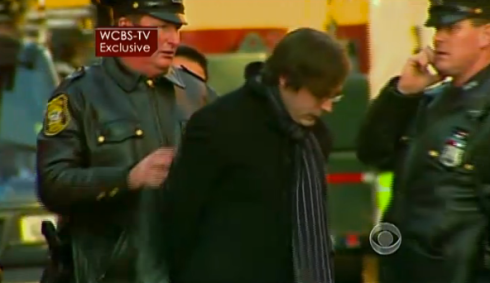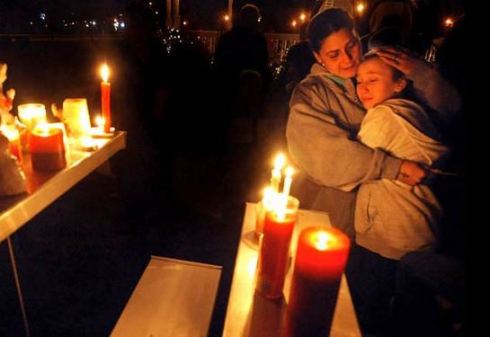By Bob Dillan
The gunman who slaughtered 20 children and six adults at a Connecticut elementary school may have snapped because his mother was planning to commit him to a psychiatric facility, according to a lifelong resident of the area who was familiar with the killer’s family and several of the victims’ families.
Adam Lanza, 20, targeted Sandy Hook Elementary School in Newtown after killing his mother early Friday because he believed she loved the school “more than she loved him,” said Joshua Flashman, 25, who grew up not far from where the shooting took place. Flashman, a U.S. Marine, is the son of a pastor at an area church where many of the victims’ families worship.
“From what I’ve been told, Adam was aware of her petitioning the court for conservatorship and (her) plans to have him committed,” Flashman told FoxNews.com. “Adam was apparently very upset about this. He thought she just wanted to send him away. From what I understand, he was really, really angry. I think this could have been it, what set him off.”
A senior law enforcement official involved in the investigation confirmed that Lanza’s anger at his mother over plans for “his future mental health treatment” is being looked at as a possible motive for the deadly shooting.
“He thought she just wanted to send him away. From what I understand, he was really, really angry.”
– Joshua Flashman, Newtown resident familiar with Lanza family
Flashman was told Nancy Lanza had begun filing paperwork to get conservatorship over her troubled son, but that could not be confirmed because a court official told FoxNews.com such records are sealed. The move would have been necessary for her to gain the legal right to commit an adult to a hospital or psychiatric facility against his will. A competency hearing had not yet been held.
Adam Lanza attended the Sandy Hook School as a boy, according to Flashman, who said Nancy Lanza had volunteered there for several years. Two law enforcement sources said they believed Nancy Lanza had been volunteering with kindergartners at the school. Most of Lanza’s victims were first graders sources believe Nancy Lanza may have worked with last year.
Flashman said Nancy Lanza was also good friends with the school’s principal and psychologist—both of whom were killed in the shooting rampage.
“Adam Lanza believed she cared more for the children than she did for him, and the reason he probably thought this [was the fact that] she was petitioning for conservatorship and wanted to have him committed,” Flashman said. “I could understand how he might perceive that—that his mom loved him less than she loved the kids, loved the school. But she did love him. But he was a troubled kid and she probably just couldn’t take care of him by herself anymore.”
The Washington Post reported that the distraught mother had considered moving with her son to Washington state, where she had found a school she thought could help him. Either way, according to Flashman, Nancy Lanza was at her wit’s end.
A separate neighborhood source also told FoxNews.com that Nancy Lanza had come to the realization she could no longer handle her son alone. She was caring for him full-time, but told friends she needed help. She was planning to have him involuntarily hospitalized, according to the source, who did not know if she had taken formal steps.
Multiple sources told FoxNews.com Adam Lanza suffered from Asperger’s syndrome, a form of autism, and unspecified mental and emotional problems.
Adam Lanza has also been described by those who knew him as highly intelligent, and a spokesman for Western Connecticut State University told The Associated Press he took college classes there when he was 16, earning a 3.26 grade point average and excelling at a computer course.
Alan Diaz, 20, who was friends with Adam Lanza at Newtown High School, said the Lanza he knew was ill-at-ease socially, but not a monster.
“He was a wicked smart kid,” Diaz told FoxNews.com by email. “When I first met him, he wouldn’t even look at you when you tried to talk to him. Over the year I knew him, he became used to me and my other friends, he eventually could have full conversations with us.
“I’ve heard him laugh, he has even comforted me once in a hard time I had,” Diaz said. “A big part of me wishes I never dropped contact with him after he left high school, felt like I could have done something.”
Flashman said nobody will completely understand why Adam did what he did.
“No one can explain Adam Lanza besides God and Adam Lanza, and I don’t even think Adam Lanza could explain Adam Lanza, to be honest with you.”








